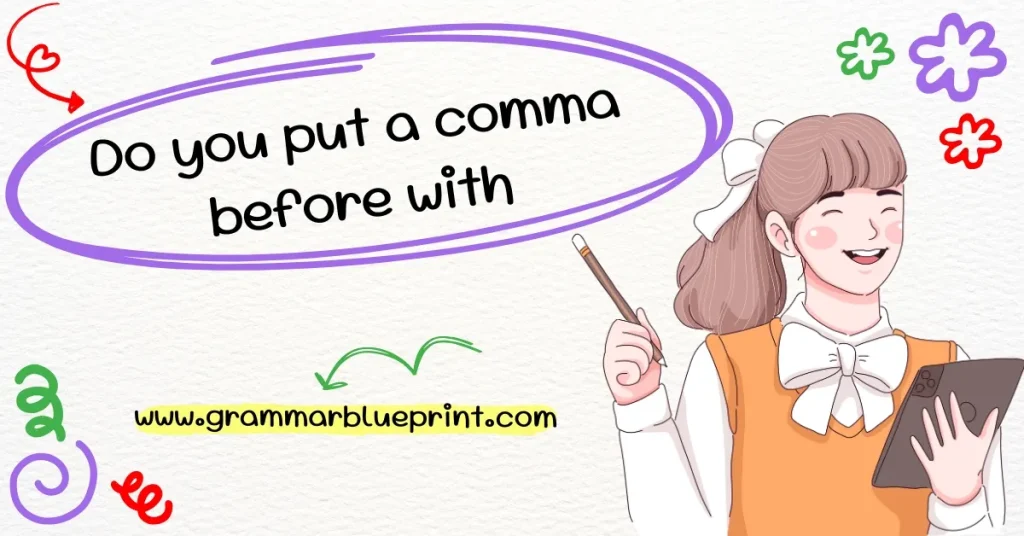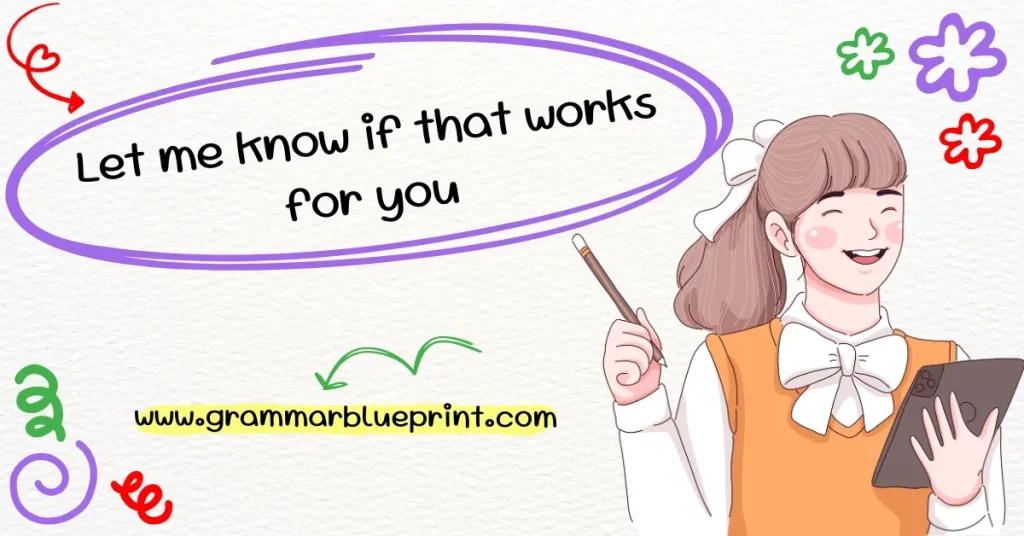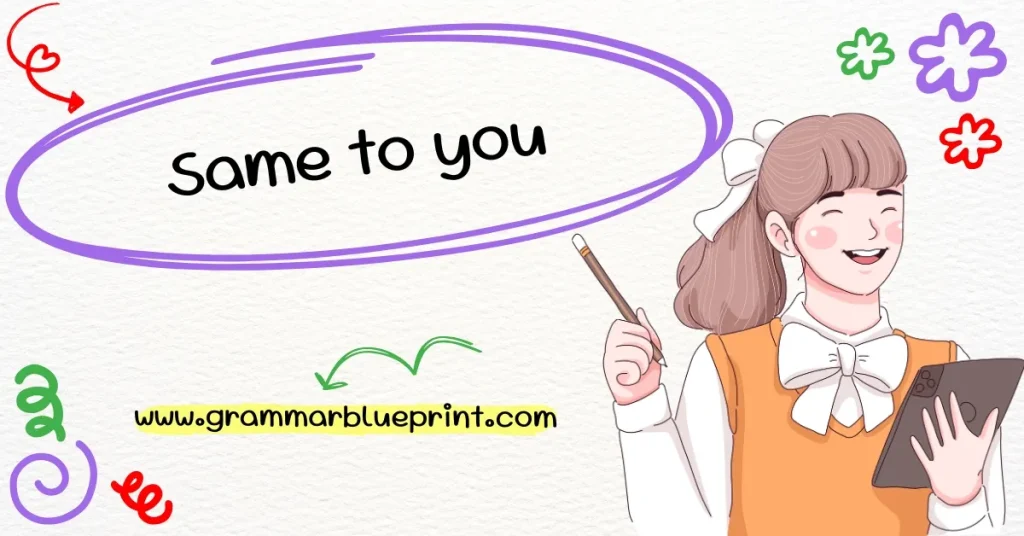Let’s be honest — punctuation isn’t exactly the stuff of dreams. But you’re here because you’ve stared at a sentence like, “I made cookies, with chocolate chips,” and thought… Wait, is that comma right?
Been there. We all have.
Knowing when to put a comma before “with” can be confusing because it depends on what you’re trying to say. Sometimes it’s necessary. Sometimes it’s wrong. And sometimes, it’s a style choice that makes your sentence easier to read (or avoids a text from your grammar-obsessed friend).
In this guide, I’ll break it all down in plain English. No jargon, no headaches—just clarity, examples, and a little bit of wit.
Do You Put a Comma Before “With” in a Sentence?
Short answer: It depends.
Long answer: A comma before “with” is used when the phrase following it is nonessential — meaning, it adds extra info, but the sentence still makes sense without it.
Example:
- ✅ I made pancakes, with blueberries on top.
- ❌ I made pancakes with blueberries. (No comma needed — “with blueberries” is essential here.)
Rule of Thumb: If you can remove the “with” phrase and the core sentence still works, a comma probably belongs there.
Think of the comma as a pause for extra detail. If that detail is just bonus flavor, throw in the comma.
When Is It Grammatically Correct to Use a Comma Before “With”?
Let’s go deeper.
Here’s when it’s grammatically correct to use a comma before “with”:
| Scenario | Use a comma? | Why |
| Nonessential phrase | ✅ Yes | Adds extra info, not needed for the sentence to make sense |
| Essential meaning | ❌ No | “With” phrase is crucial to the sentence’s meaning |
| After introductory elements | ✅ Sometimes | Adds a pause for clarity |
| Compound sentences | ✅ Possibly | If “with” begins a new independent clause with its own subject (rare) |
Should I Use a Comma Before “With” in a List?
This is where things get spicy.
If “with” introduces an item in a list, you generally don’t need a comma before it… unless it’s the Oxford comma type situation or you want to avoid confusion.
Examples:
- ✅ I brought snacks, drinks and a blanket with a floral print. (No comma before “with”)
- ✅ I brought snacks, drinks, and a blanket, with a floral print. (Comma optional — adds a stylistic pause)
PRO TIP: If the “with” phrase modifies the last item in the list, don’t split them with a comma unless you’re breaking the flow for emphasis.
Is a Comma Necessary Before “With” When Adding Extra Information?
Absolutely — if that extra information is what we grammar nerds call a nonrestrictive element.
Think of it like this: If you’re whispering something extra to your reader, throw in a comma.
Example:
- ✅ She finally finished the project, with some help from her coworkers.
That’s a little side note — a “by the way” moment. The sentence works just fine without that bit.
What Is the Rule for Using Commas with “With” in Compound Sentences?
Now here’s the thing: “With” almost never starts a new independent clause. It’s a preposition, not a conjunction like “and” or “but.” So, don’t slap a comma before it just because you see a long sentence.
Incorrect:
- ❌ He cleaned the room, with he also vacuumed. (Awkward and wrong.)
Correct:
- ✅ He cleaned the room and also vacuumed.
But…
If “with” is part of a long descriptive clause, a comma can still help break it up for readability.
Does the Phrase After “With” Affect Comma Usage?
You bet it does.
Here’s the breakdown:
| Type of Phrase After “With” | Comma Before “With”? | Example |
| Adds extra info (nonessential) | ✅ Yes | She smiled, with pride shining in her eyes. |
| Restrictive (essential meaning) | ❌ No | She smiled with pride. |
| Long modifiers or prepositional phrases | ✅ Often | He spoke clearly, with a sense of calm and certainty in his tone. |
Use your ear — if a pause feels right, a comma usually is too.
Can “With” Ever Start a Nonessential Clause Requiring a Comma?
Technically, yes.
But “with” doesn’t start clauses in the same way as “which” or “who.” Instead, it introduces prepositional phrases — and those can still be nonessential.
Example:
- ✅ The book was a success, with critics praising its originality.
See how “with critics praising…” is just extra info? That comma is your friend here.
How Do I Know If the Clause with “With” Is Essential or Nonessential?
This one’s a gut check.
Ask yourself:
- Can I remove the “with” phrase and still understand the main point?
- Is the “with” part just a bonus detail?
If “yes,” toss in a comma. If “no,” leave it out.
Quick Test:
- I bought a cake with strawberries. (Essential. You’re telling me what kind of cake.)
- I bought a cake, with strawberries on the side. (Nonessential. That’s bonus info.)
Is Comma Placement Before “With” Different in British vs. American English?
Surprisingly? Not really.
Both American and British grammar generally agree on this one. The comma-before-“with” rule follows the same basic idea:
- Use a comma for nonessential info
- Skip it when the “with” phrase is essential
The difference? Style.
British English leans more toward minimal punctuation. Americans love a good pause.
What Are Some Examples of Sentences With and Without a Comma Before “With”?
Let’s wrap this up with some real-world sentence surgery. Here’s a handy table:
| With Comma | Without Comma |
| She arrived early, with coffee in hand. | She arrived with coffee in hand. |
| He completed the painting, with only a few mistakes. | He completed the painting with confidence. |
| I enjoyed the movie, with its quirky humor. | I enjoyed the movie with my friends. |
Bonus Tip: If You’re Still Unsure… Just Read It Out Loud
Seriously. This works.
If reading your sentence out loud makes you pause before “with,” chances are, a comma belongs there.
Conclusion: Comma Drama Solved!
So, do you put a comma before “with”?
- Yes, when it adds extra, nonessential info.
- No, when it’s part of the core meaning.
- And sometimes, it’s all about your voice and rhythm.
Remember: Grammar should help your writing, not tie it up in rules. If it sounds good and makes sense, you’re probably on the right track.
Now it’s your turn — try reworking a few of your own sentences. Do any commas need rescuing?
What Do You Think?
Did this article clear things up? Still a little confused about your “with” situation? Drop a comment below — or better yet, show me a sentence you’re stuck on. I’d love to help!
And hey, if this helped you out, share it with someone else who’s had a comma crisis.



